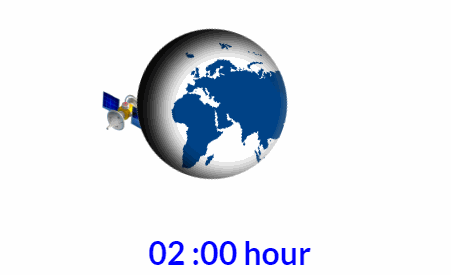Password Generator: Design a password generator that produces secure and memorable passwords based on user-specified criteria. This project will introduce students to concepts like random number generation, string manipulation, and user input validation. They can add their own cipher method with ke…
Tuesday 19 December 2023
Friday 15 December 2023
Master the Cosine Rule with Our Interactive and Easy-to-Use Tool
The cosine rule is a fundamental concept in geometry that can be used to solve a variety of problems. However, it can be difficult to understand and apply, especially for students who are just learning about it. That's why we created a new interactive simulation that makes learning the cosine ru…
Thursday 14 December 2023
Demystifying Decimal to Binary Conversion with Python - GCSE and A Level
Denary to binary conversion is a fundamental concept in computer science and digital electronics. It involves transforming a base 10 number, which represents the number system we commonly use, into a base 2 number, which is the language used by computers to store and manipulate information. As far a…
Mastering Iteration for GCSE Maths: A Step-by-Step Guide
Aim: To use iteration to find an approximate solution to the equation x² - x - 5 = 0. Step 1: Rearrange the equation to get the iterative form, x² = x + 5.. Step 2: Divide both sides of the equation by x to get x = 1 + 5/x - the iterative form. Step 3: Now write it in this form: x n+1 = 1 + 5/x n Step 4: …
Monday 2 October 2023
Starlink: Constellation of satellites that revolutionized broadband internet by reducing latency
The constellation of satellites of Starlink, owned by SpaceX, is already revolutionizing the broadband internet in terms of speed of data transmission, low latency and of course, the possibility of accessing it from anywhere in the world - even in the remotest parts of the world. Since Arthur C Clar…
Wednesday 2 August 2023
How I submitted a Chrome Extension to Google and and got it published in Chrome Web Store in less than 24 hours in 2023...
The creation of a Chrome extension from scratch, submitting it to the Browser Web Store, getting it reviewed - and then, published - in less than 24 hours is something that any aspiring developer can be proud of. I managed to do just that today, on 2 August, 2023 and in this tutorial I am going to e…
Monday 2 January 2023
Concave, convex functions and points of inflection
Concave functions If f''(x) ≤ 0 in a given interval of x, the function is said to be concave. Convex functions If f''(x) ≥ 0 in a given interval of x, the function is said to be convex. Point of Inflection The point at which a curve changes being concave to convex or vice versa is called…
Subscribe to:
Posts (Atom)
Popular Posts
-
Multiple Choice Questions - A Level Physics and Mechanics - Time: 40 minutes Created and Programmed by Vivax Solutions St...
-
In the above animation, five points on the wave are considered for the explanation. The fully interactive applet is given below for you ...
-
Multiple Choice Questions - A Level Physics - electricity - Time: 40 minutes Created and Programmed by Vivax Solutions Star...
-
A Level Physics Time: 60 minutes Created and Programmed by Vivax Solutions Start the Quiz Submit Quiz ...
-
Multiple Choice Questions - A Level Physics - Thermal physics - Time: 40 minutes Created and Programmed by Vivax Solutions Start the ...
TOP CATEGORIES
- a level computer science (11)
- a level physics (37)
- gcse maths (25)
- gcse physics (12)
- general physics (10)
Featured Post
Labels
a level computer science
(11)
A Level Maths
(24)
a level physics
(37)
featured
(4)
GCSE Computer Science
(9)
gcse maths
(25)
gcse physics
(12)
general physics
(10)










